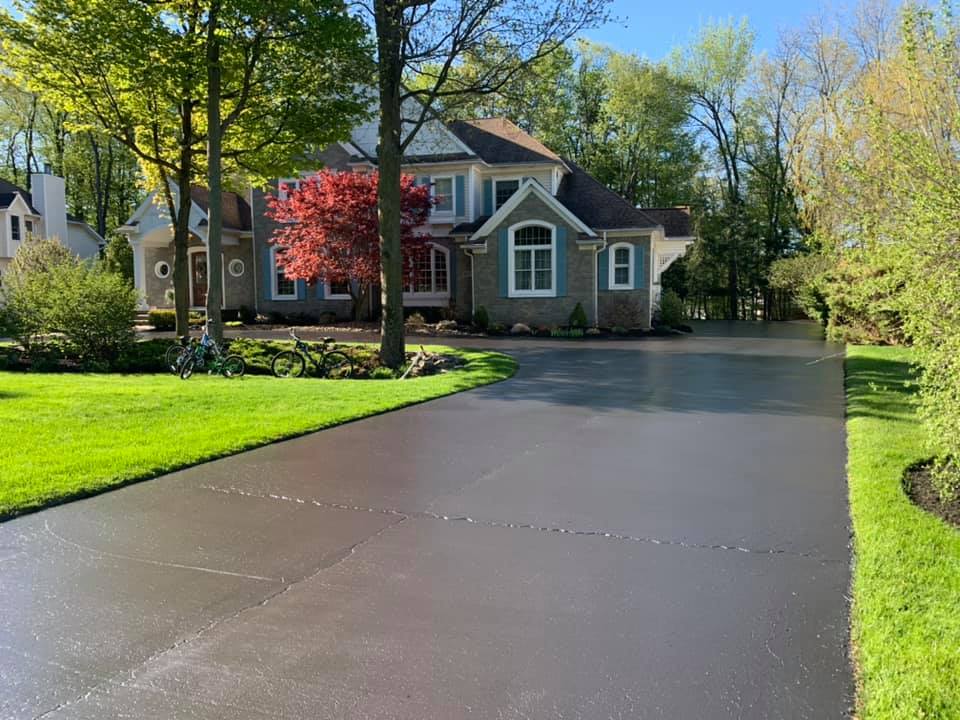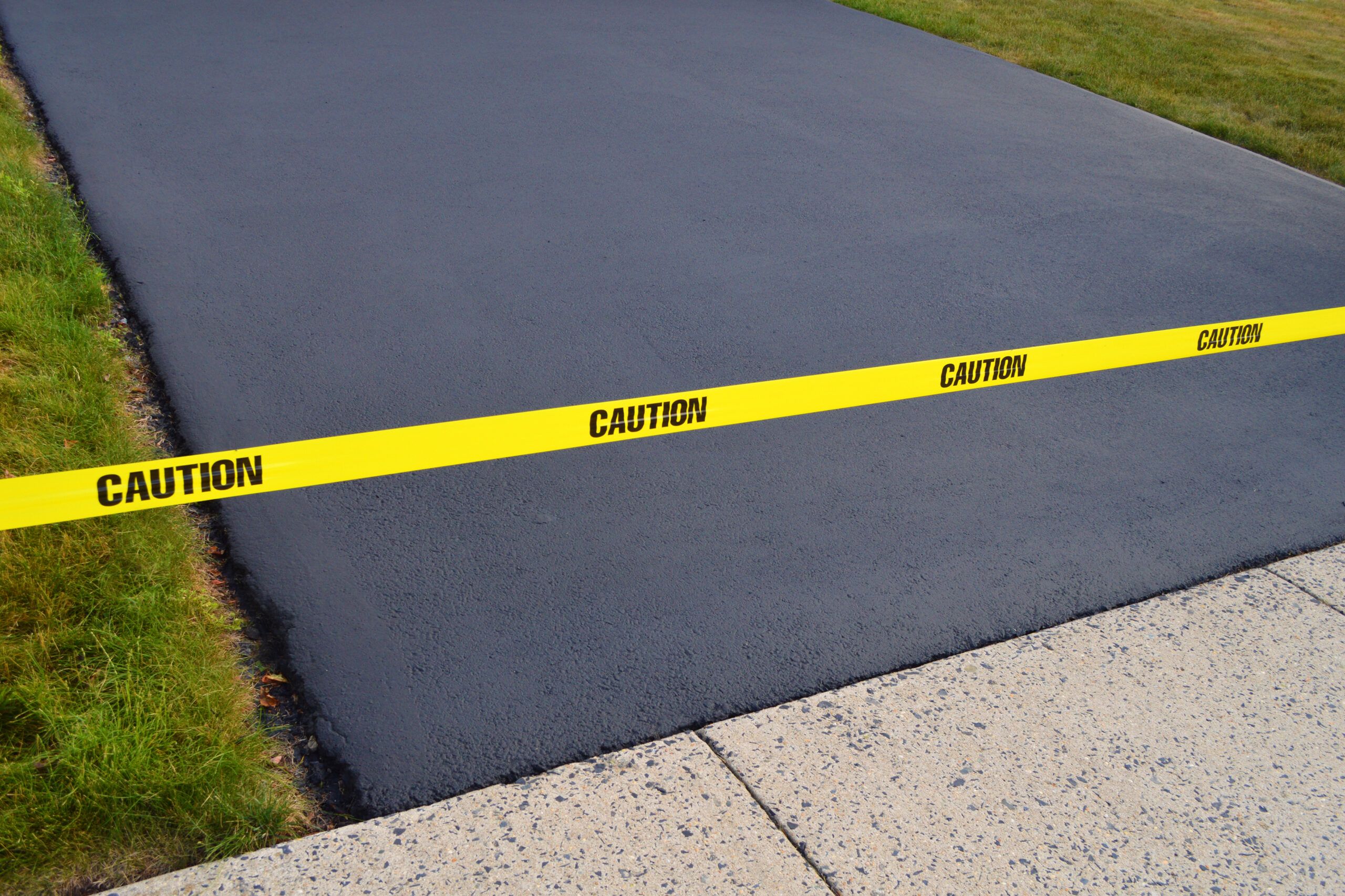Let loose the Potential: Regrading and Asphalt Sealing for Business Spaces
Let loose the Potential: Regrading and Asphalt Sealing for Business Spaces
Blog Article
Warm Mix Asphalt: A Sustainable Remedy for Sidewalk
Hot Mix Asphalt (HMA) has actually arised as a leading sustainable selection for sidewalk services, using a myriad of innovative technologies and environmental advantages. As the need for green building techniques grows, exploring the nuances of HMA's sustainability can give useful understandings right into the future of pavement remedies.
Environmental Benefits of Warm Mix Asphalt

In Addition, Warm Mix Asphalt helps to reduce city warmth island results. Its dark color absorbs sunlight, lowering the quantity of warmth showed back into the environment compared to lighter-colored sidewalks. This can decrease ambient temperature levels in urban areas, decreasing the need for a/c and inevitably decreasing energy consumption.
In enhancement, Warm Mix Asphalt adds to enhanced stormwater monitoring. Its porous nature allows water to reenergize and penetrate the sidewalk groundwater materials, lowering drainage and the danger of flooding. These environmental advantages make Warm Mix Asphalt a lasting choice for leading highways and roadways.
Energy Efficiency in HMA Manufacturing
Is power effectiveness an important aspect in the production of Warm Mix Asphalt (HMA)? Energy plays a substantial duty in the manufacturing of HMA, affecting both cost and ecological sustainability. One key aspect of energy performance in HMA manufacturing is the use of cozy mix asphalt (WMA) technologies.
Additionally, developments in plant modern technologies have actually led to more energy-efficient HMA production procedures. By maximizing power usage in HMA production, the industry can reduce its carbon footprint while preserving top quality sidewalk products.
Recyclability of Hot Mix Asphalt
The recyclability of Warm Mix Asphalt (HMA) is a critical aspect of its sustainability and long-term ecological effect. HMA is among the most recycled products in the USA, with over 100 million heaps of redeemed asphalt pavement (RAP) being recycled annually in new pavement construction. Reusing HMA offers several environmental advantages, such as minimizing the demand for virgin materials, lowering energy usage throughout manufacturing, and reducing the quantity of waste sent to landfills.
The process of recycling HMA includes milling the existing sidewalk, squashing it into smaller sized items, and blending it with new aggregate and asphalt binder to develop a recycled mix. Generally, the recyclability of HMA plays a considerable role in advertising lasting methods within the pavement market.

Long-Term Performance of HMA
Asphalt pavements show sturdiness and strength over an extended period, showing the long-term efficiency of Warm Mix Asphalt (HMA) Additionally, innovations in HMA technology, go to this web-site such as the usage of polymer-modified binders and cozy mix asphalt, have better improved the sturdiness and long life of HMA pavements. By focusing on top quality building and construction and maintenance methods, HMA proceeds to prove itself as a lasting and cost-efficient solution for lasting sidewalk framework.

HMA: Durability and Sustainability
Showing both sturdiness and sustainability, Hot Mix Asphalt (HMA) has actually come to be a cornerstone in the building and construction of lasting sidewalk facilities - angled parking. HMA's toughness stems from its capacity to endure hefty loads, extreme climate condition, and high web traffic quantities, making it a reputable choice for streets, freeways, and airport paths. The composition of HMA, which normally includes aggregates, binder, and filler, plays a crucial function in boosting its longevity and resistance to tear and put on
Furthermore, HMA's sustainability exists in its recyclability and energy-efficient manufacturing process. The capability to recycle reclaimed asphalt pavement (RAP) in new HMA combinations reduces the demand for virgin materials and decreases the environmental effect of sidewalk building and construction and upkeep. Additionally, the energy effectiveness of generating HMA depends on its lower mixing temperatures compared to other pavement products, bring about reduced energy consumption and greenhouse gas discharges.
Final Thought
In verdict, warm mix asphalt (HMA) uses a sustainable option for pavement with its eco-friendly features. HMA's recyclability, power performance in manufacturing, and lasting resilience make it a green selection for roadway building and construction. By preserving all-natural sources, reducing waste, and reducing greenhouse gas discharges, HMA read the article plays a critical duty in advertising sustainability in facilities advancement. Its capability to minimize metropolitan warm island effects further underscores its relevance in developing eco aware and durable pavement systems.
HMA is one of the most recycled products in the United States, with over 100 million lots of reclaimed asphalt sidewalk (RAP) being reused each year in new pavement building and construction.The process of reusing HMA includes milling the existing sidewalk, crushing it into smaller items, and mixing it with new accumulation go right here and asphalt binder to produce a recycled mix.Asphalt sidewalks demonstrate resilience and strength over an extended duration, reflecting the long-lasting efficiency of Hot Mix Asphalt (HMA) Additionally, advancements in HMA technology, such as the use of polymer-modified binders and warm mix asphalt, have actually even more boosted the sturdiness and long life of HMA pavements. The capability to recycle redeemed asphalt pavement (RAP) in brand-new HMA combinations decreases the need for virgin products and reduces the ecological effect of sidewalk building and construction and maintenance.
Report this page